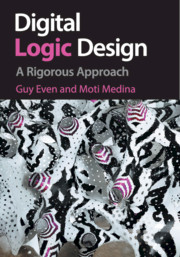Book contents
- Frontmatter
- Contents
- List of Algorithms
- Preface
- PART I PRELIMINARIES
- 1 Sets and Functions
- 2 Induction and Recursion
- 3 Sequences and Series
- 4 Directed Graphs
- 5 Binary Representation
- 6 Propositional Logic
- 7 Asymptotics
- 8* Computer Stories: Big Endian versus Little Endian
- PART II COMBINATIONAL CIRCUITS
- PART III SYNCHRONOUS CIRCUITS
- PART IV A SIMPLIFIED DLX
- Bibliography
- Index
8* - Computer Stories: Big Endian versus Little Endian
from PART I - PRELIMINARIES
Published online by Cambridge University Press: 05 November 2012
- Frontmatter
- Contents
- List of Algorithms
- Preface
- PART I PRELIMINARIES
- 1 Sets and Functions
- 2 Induction and Recursion
- 3 Sequences and Series
- 4 Directed Graphs
- 5 Binary Representation
- 6 Propositional Logic
- 7 Asymptotics
- 8* Computer Stories: Big Endian versus Little Endian
- PART II COMBINATIONAL CIRCUITS
- PART III SYNCHRONOUS CIRCUITS
- PART IV A SIMPLIFIED DLX
- Bibliography
- Index
Summary
A long-standing source of confusion is the order of bits in binary strings. This issue is very important when strings of bits are serially communicated or stored in memories. Consider the following two scenarios.
In the first setting, Alice wishes to send to Bob a binary string a[n − 1 : 0]. The channel that Alice and Bob use for communication is a serial channel. This means that Alice can only send one bit at a time. Now Alice has two natural choices:
She can send a[n − 1] first and a[0] last; namely, she can send the bits in descending index order. This order is often referred to as most significant bit first or just MSB first.
She can send a[0] first and a[n − 1] last; namely, she can send the bits in ascending index order. This order is often referred to as least significant bit first or just LSB first.
In the second setting, computer words are stored in memory. A memory is a vector of storage places. We denote this vector by M[0], M[1],. … Suppose that each storage place is capable of storing a byte (i.e., 8 bits). The typical word size in modern computers is 32 bits (and even 64 bits). This means that a word is stored in four memory slots. The question is, how do we store a word a[31 :0]in four memory slots?
- Type
- Chapter
- Information
- Digital Logic DesignA Rigorous Approach, pp. 104 - 106Publisher: Cambridge University PressPrint publication year: 2012

